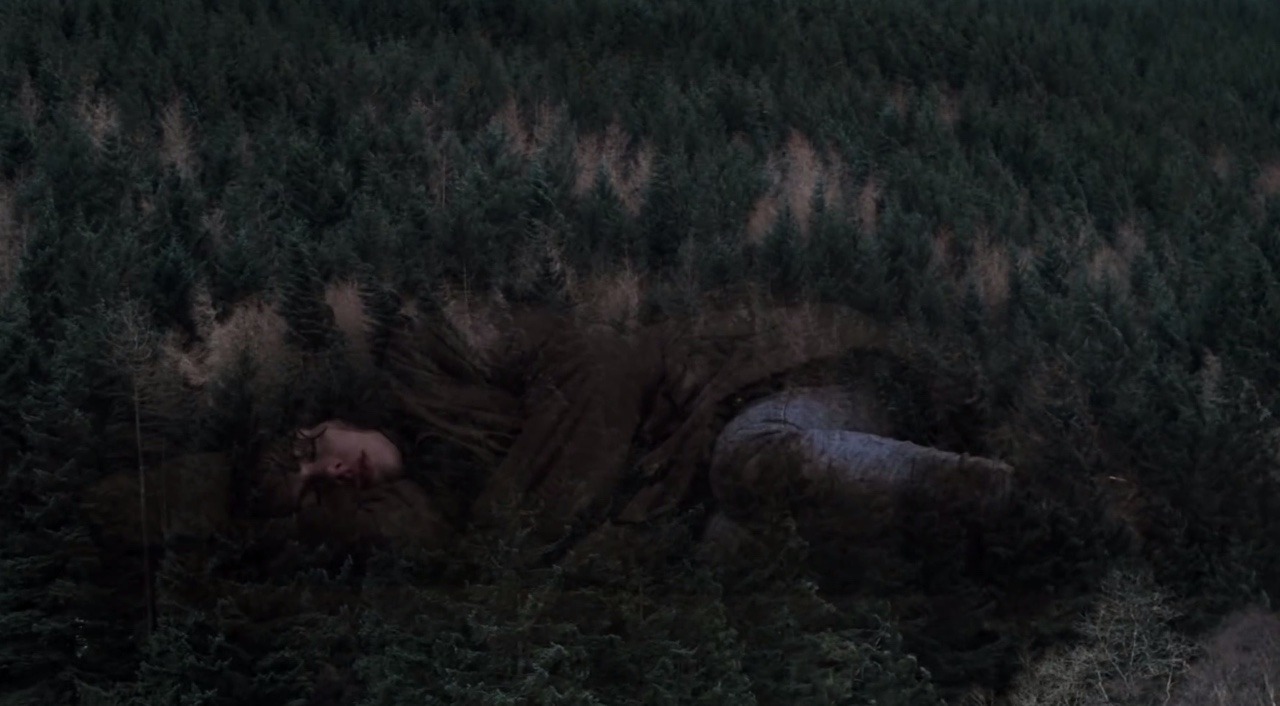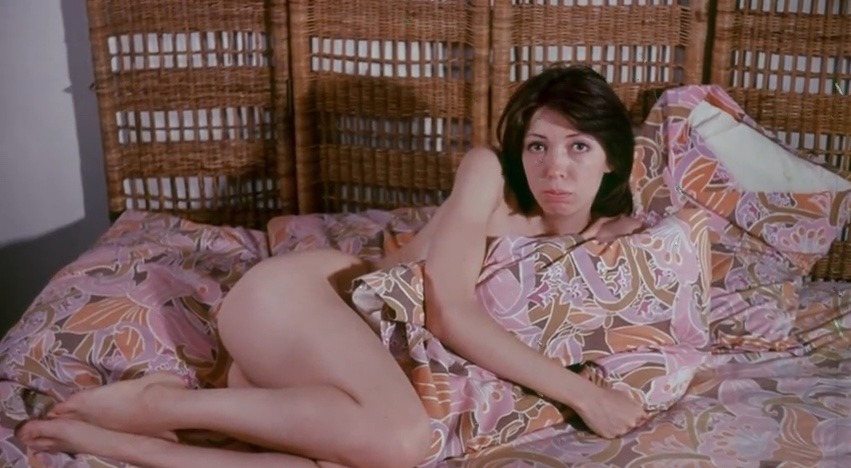The narrative of Under the Skin unfolds a lot like the scene from Weekend that we watched last week: we see result after deadly result of the Female’s (as the IMDb refers to her) inhuman machinations before the end when we finally see what she is, the form that has forced her to inhabit her human skin and do the deadly things that she must (until she meets the deformed man, Adam, anyway). Arguably the moments of violence, like the disintegration of one victim’s body, are more disturbing than the brief glimpses Godard gives us of the corpses in the Weekend road accidents, but what’s even more shocking is the potential for nonhuman, extraterrestrial beings to have the feelings and reactions we ascribe solely to “human” people and that some human beings are predators devoid of empathy or other traditionally human emotional characteristics. Perhaps that makes the sex scene between the Female and her Scottish sort-of-savior particularly discomforting: he thinks he is having physical and/or emotional contact with a being who looks human – and almost is one – but actually is not.

My favorite shot in Under the Skin is the image of the Female, asleep in the cabin in the woods, juxtaposed against the lush greenery of the forest. The shot reminds me of Maya Deren’s short film At Land (1944), in which her body is present (usually recumbent) in unusual spaces like on a long table at a dinner party. We’re aware of the strangeness of a woman lying down or crawling through environments in a manner that is not socially acceptable or even logically possible, but what’s even more surprising is how a shot of a woman’s entire body becomes less about her physicality and more about the setting it is in and how the blurring of time/space and real/unreal creates meaning in what we are seeing. Throughout most of the film the Female’s figure is sexualized, but in the forest shot we see her becoming one with nature, perhaps dreaming of being a living, breathing human. I’m sure that some viewers can’t get more out of the experience of watching Under the Skin than the titillation of Scarlett Johansson’s physical form, but there is so much happening beneath the surface of the character (or at least so much to interpret in our projections) – going on under the skin of the film.

When we discussed the image of the Woman’s eye as “meat,” that immediately reminded me of another Scarlett Johansson film that was in theaters last year, sometime between Under the Skin and Lucy: the Jon Favreau-directed comedy Chef. Johansson’s character is a one-dimensional object of lust for the main character, a cute co-worker whose amount of screen time directly relates to how needed and/or wanted she is by men. (She’s needed to run things efficiently in the restaurant; she’s wanted for a brief fling with Favreau that has no pesky emotional baggage or character development.) There’s a shot of Johansson in which she is not merely a prop; she is literally propped up on her elbow as she watches Favreau cook, waiting for the moment when she gets to taste the meal and reassure him that he’s a master of his craft. She is meat carefully arranged and served on a couch-plate, a thigh to feed the hungry eye of the audience.

While looking at that image of Johansson in Chef, I am also reminded of a shot from the Roberta Findlay film Angel on Fire (1974), which I have been reading about in conjunction with a proposal that I have been writing for another class. My research deals with representations of women’s bodies in films directed by women, a topic that I initially restricted to 1915-1955 but which eventually expanded to the 1960s and 70s because of my interest in how portrayals of the body change in the era of low-budget sexploitation and pornography. Our perceptions of film and the female bodies in them change, I think, in the case of Findlay’s career since she not only directed but also photographed her films (and she edited Angel on Fire), putting her in control of the images produced. The character in the shot above is supposed to be pregnant and the camera stands in for her fiancé as he listens to her announce the news of her condition. Findlay simultaneously exposes and covers up the pregnant woman’s body, a combination of eroticization and her new role as a mother. Do the politics of the body work according to the same rules when body parts are on display in porn? Is it “feminist” porn because the story is written, filmed and put together in post-production by a woman, or is there more that has to be involved with regard to plot and characterizations?


